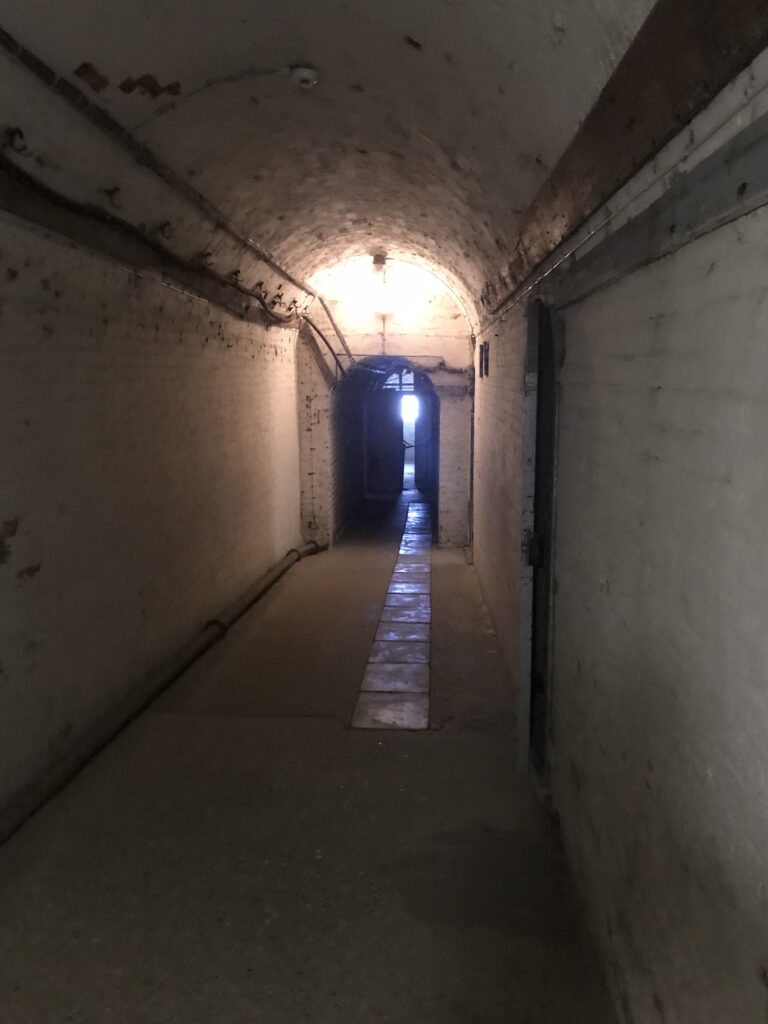
Hop on the fast train from St Pancras and you can be in Dover in a little over an hour. Grab a cab from the station (the alternative is a fairly strenuous 20 minute uphill walk) and you arrive at Dover Castle – an absolute treat of a place.
It overlooks Dover harbour and, on any reasonably clear day, one can see the French coast just 20 miles or so away. This closeness to the continent is the main reason why the castle is so big and so strong, because for centuries it needed to be a defensive bulwark against invasion and a symbol of English national power to visitors from the continent: the physical expression of “see how strong we are; don’t mess with us”.
This role has seen the castle’s buildings and defences change and grow. The massive keep at the centre of the complex, built by Henry II from 1180 onwards, is every inch the mediaeval stronghold, but when French invasion threatened in the 1700s and 1800s, new defences were constructed, firing platforms were created for cannon, and barracks built that housed hundreds of soldiers.
These barracks included those that were tunnelled into the chalk cliffs, a massive troglodytic complex of rooms, passageways and staircases. During WW2 some of these tunnels were repurposed, and new ones chiselled out, for a field hospital and also as a command centre for Vice-Admiral Bertram Ramsay, the logistical genius who masterminded the Dunkirk evacuation (as well as the allied invasions of Sicily, North Africa and ‘Operation Neptune’, the seaborne element of D Day). during the Cold War even deeper tunnels were excavated to house a government administration centre in case of nuclear attack.
These tunnels, where you walk through the chalk passageways into the huge rooms carved out of the White Cliffs (noting the pick marks and the wartime graffiti), make the past almost tangible. You can’t explore these on your own, but the castle’s guided tours run regularly, the ‘Operation Dynamo’ (Dunkirk) one being especially recommended.


Photo by Michael Garlick: Creative Commons Attribution-Share Alike 4.0 International license.


The main keep of the castle is glorious and one can make one’s way to the roof and see the commanding position that made it such a strategic site for over 20 centuries (there is evidence of an Iron Age hillfort here, and the Roman channel fleet was based at Dover, and within the castle walls is the tower of a Roman Pharos, or lighthouse.)
At the risk of sounding like the castle’s PR department, there is too much to see and do in just one day, so focus on your main interest and treat whatever else you manage to see as a bonus, and compile another list for a subsequent visit.
In my case that meant I went through the Dunkirk and WW2 hospital tunnels, and had almost enough time for The Great Tower, but missed the anglo-saxon church. Next time I go, that will be where I head for first.
You can find full details of the castle, its history and its attractions, on the English Heritage website here.
Sign up to the newsletter
Powered by EmailOctopus

